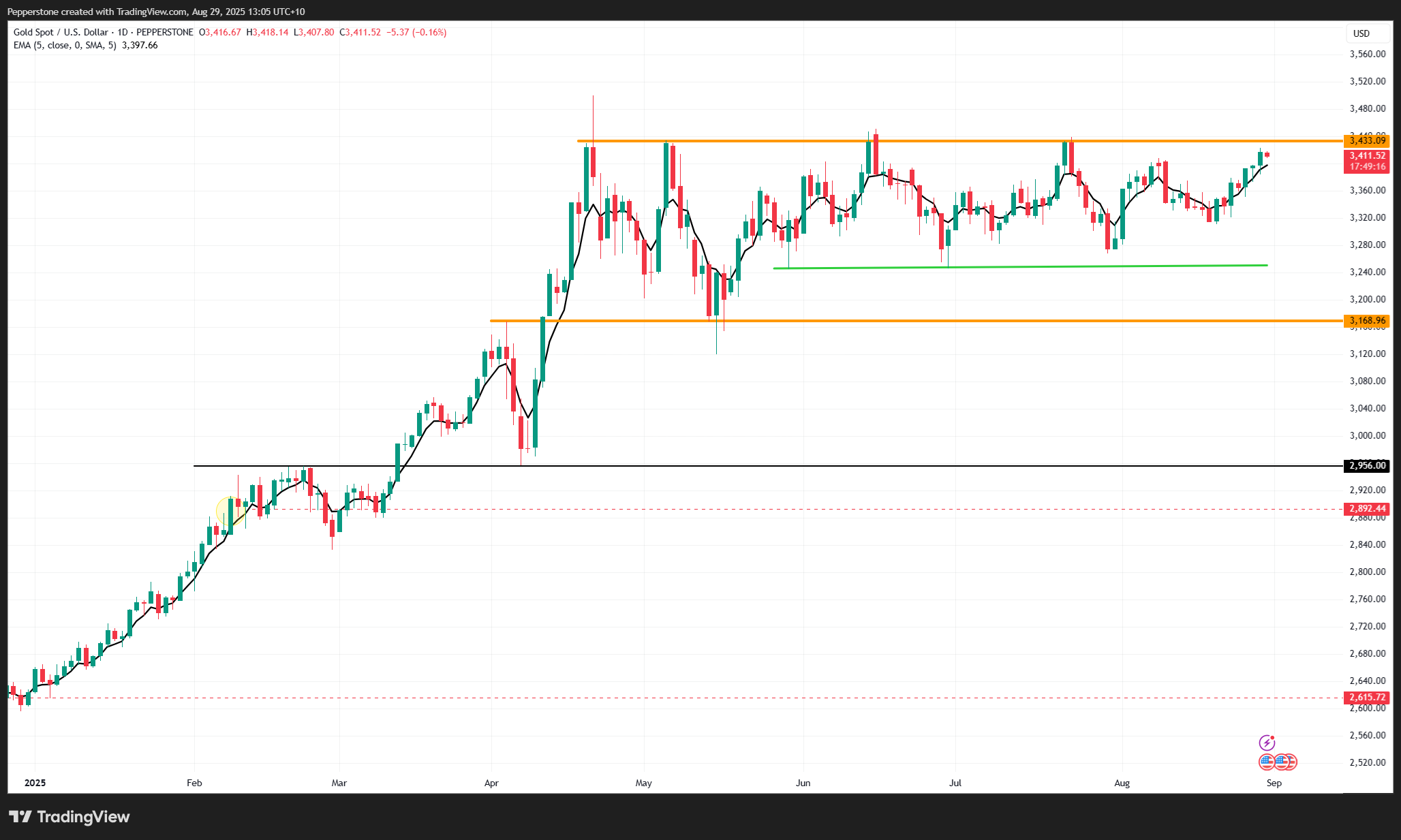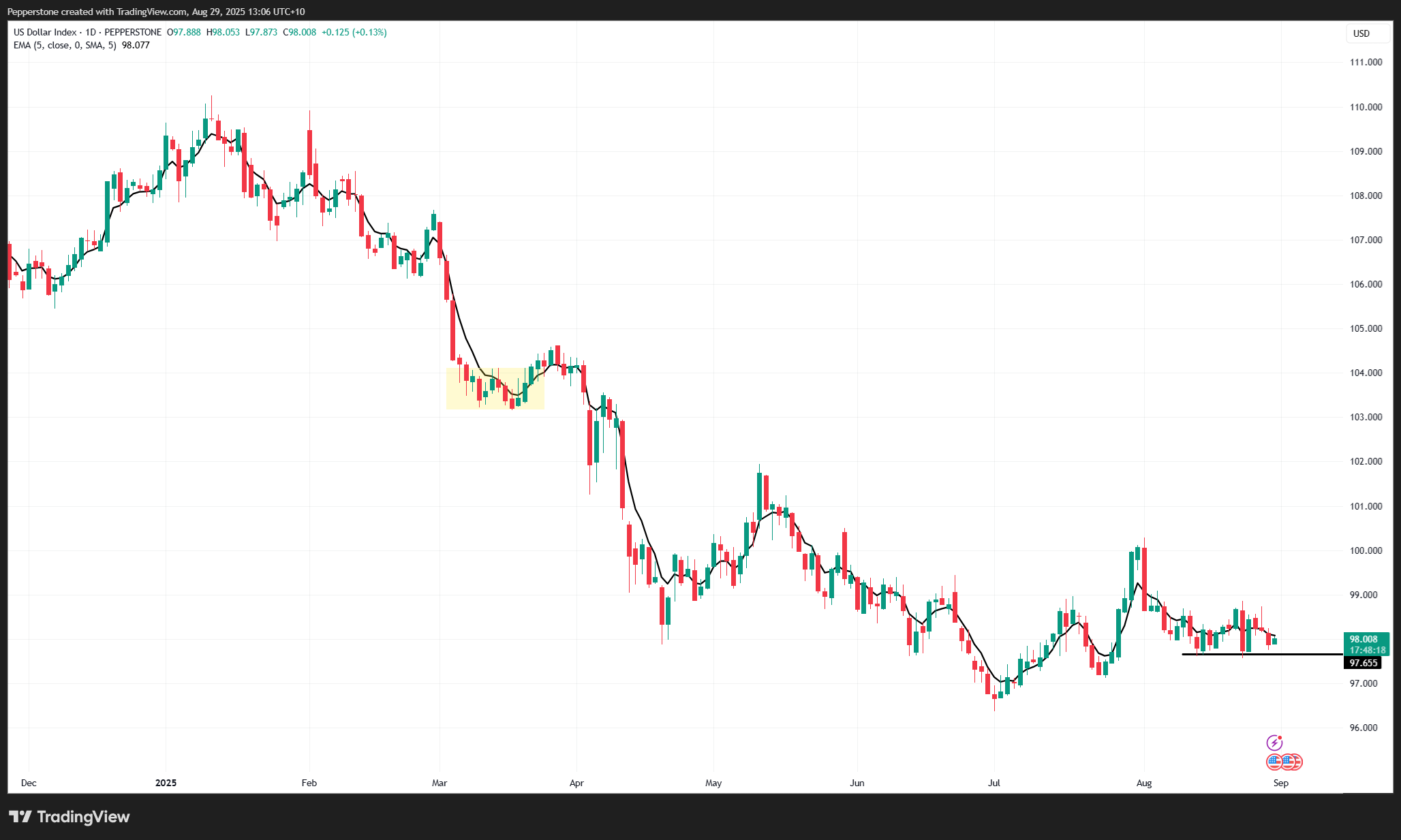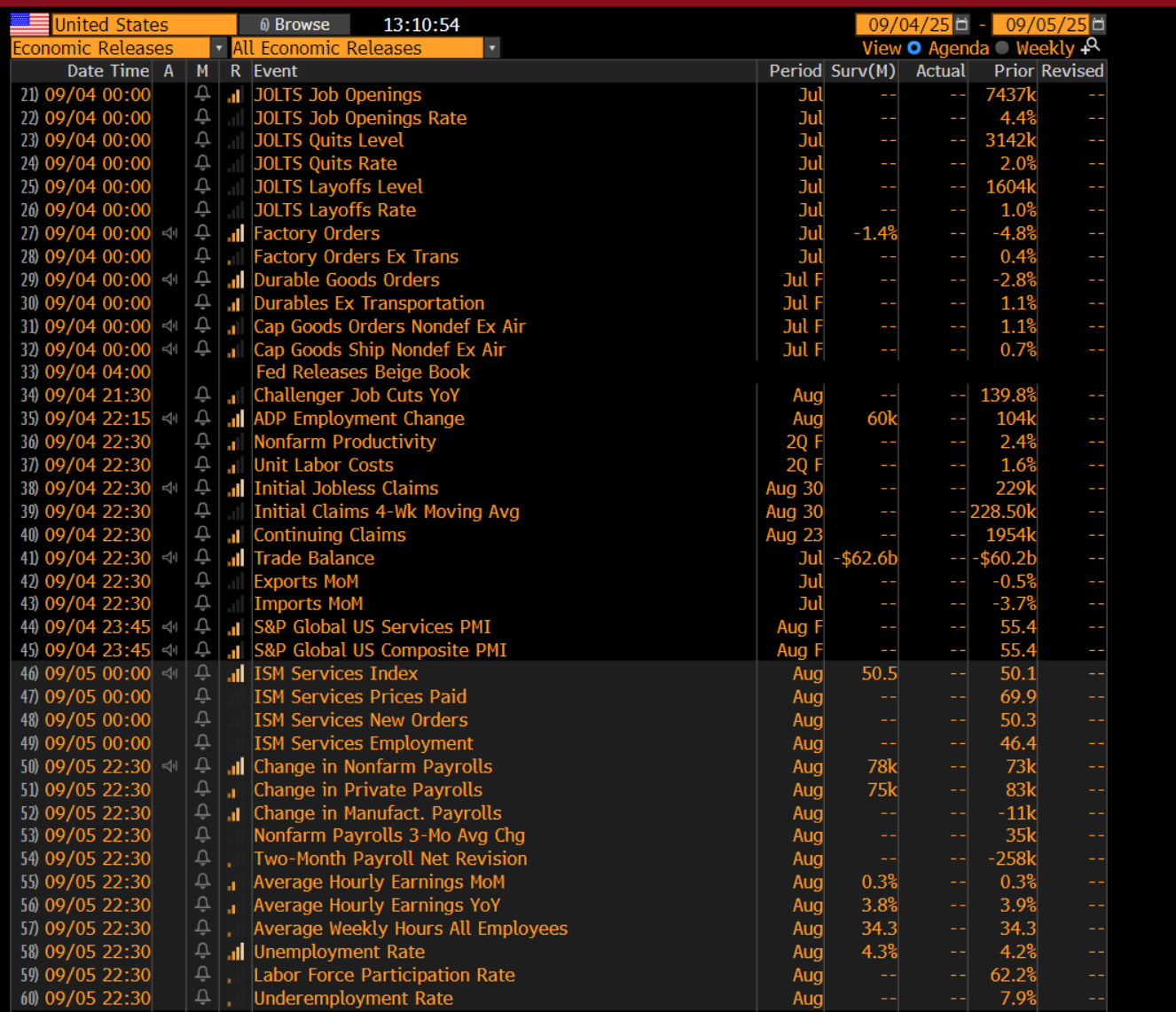CFDs are complex instruments and come with a high risk of losing money rapidly due to leverage. 80% of retail investor accounts lose money when trading CFDs with this provider. You should consider whether you understand how CFDs work and whether you can afford to take the high risk of losing your money.
- English
- 简体中文
- 繁体中文
- ไทย
- Tiếng Việt
- Español
- Português
- لغة عربية
Gold’s Stealth Rally: Payrolls and Fed Policy Will Decide the Next Break


The reasons for the move in gold are largely subjective and open to interpretation—there is no single “smoking gun” that defines the investment case or explains why the collective are finding attraction in pushing price higher.
Positive Catalysts on the Radar
• USD weakness: The DXY has been moving in sideways consolidation but is now pushing towards range lows. A decisive downside break of 97.60 could trigger accelerated selling flows, taking the broad USD towards the 24 July swing low and possibly the YTD lows of 96.37.

• It's not just a USD story: A weaker USD naturally provides tailwinds for XAUUSD, but even priced in the strongest currency over the past five days—the CNH—gold has still moved higher. This suggests the move in gold is not solely a USD effect.
• Falling US 'real' Treasury yields: US real Treasury yields have declined sharply across the curve, with the US 2-year real yield falling from 1.50% in June to 0.89% currently. The correlation between gold and real yields fluctuates, but the recent move lower in yields has strengthened the relationship. Since gold has no yield, lower expected inflation-adjusted returns in bonds increase its relative attractiveness.
• Powell’s quasi pivot: Fed Chair Jay Powell’s tone at Jackson Hole has put the Fed’s easing cycle back on the map. Interest rate swaps are now implying an 87% probability of a cut at the September FOMC, with the implied terminal rate below 3%.
• Fed independence concerns: Gold serves as a default hedge against further erosion in Fed independence. With Fed Governor Cook suing President Trump, Trump appears more determined to find a way to remove her. The perception of Trump stacking the Fed undermines foreign investor confidence in the USD, boosting gold.
• Gold miners performing admirably: The GDX ETF has gained 81% YTD, trading at its highest levels since 2011, with consistent inflows. ASX200-listed gold plays have also had a strong year, with solid gains in Regis Resources, Newmont ADR, Evolution Mining, and St Barbara.
• Equities outperforming spot gold: Listed gold equities typically outperform spot or futures prices near all-time highs, given relative liquidity. Strong balance sheets, breakeven rates of production, and a solid earnings profile suggest confidence in the ongoing trajectory of the gold price.
• Options market skew: Options traders are pricing in upside risks. One-month gold risk reversals (the difference between implied volatility of 1-month calls and puts) have risen to 1.27. This reflects the view that if gold makes a big move, it is more likely to be to the upside.
Key Risks Ahead
• Tariffs and trade: Uncertainty around Swiss gold exports to the US has eased, with shipments resuming. But traders remain focused on the macro backdrop and the US economy.

• Seasonals Effects: September is by far the worst month for gold returns – in the past 10 years gold has closed lower in September in 8 occurrences, falling by an average of 1.8%.
• Today’s core PCE inflation data: US core PCE inflation is a key risk for USD and gold. A print above 3% could trigger gold selling, while a print at or below 2.8% would be a tailwind for the gold price, modestly boosting the odds of a September Fed cut.
• Next week’s Nonfarm Payrolls Report: The bigger event for gold is Friday’s US NFP report. A weak print (sub-80k payrolls, chunky downward revisions, and unemployment above 4.3%) could ignite gold strength, potentially bringing a 50bp September Fed cut into play. That scenario would hammer the USD and push gold into the range highs. Conversely, a hotter PCE report and a stronger NFP print could see the market cut the odds of a September 25bp cut to just 50%, weighing on gold.
In Summary
The fate of the gold market—and whether range highs are tested next week—ultimately rests on upcoming US data. Gold will take its steer from the USD and real yields, but it’s the data that will decide its path. If the numbers flag economic fragility and the perception grows that the Fed is behind the curve, gold could kick higher as a hedge, with new highs on the horizon
The material provided here has not been prepared in accordance with legal requirements designed to promote the independence of investment research and as such is considered to be a marketing communication. Whilst it is not subject to any prohibition on dealing ahead of the dissemination of investment research we will not seek to take any advantage before providing it to our clients.
Pepperstone doesn’t represent that the material provided here is accurate, current or complete, and therefore shouldn’t be relied upon as such. The information, whether from a third party or not, isn’t to be considered as a recommendation; or an offer to buy or sell; or the solicitation of an offer to buy or sell any security, financial product or instrument; or to participate in any particular trading strategy. It does not take into account readers’ financial situation or investment objectives. We advise any readers of this content to seek their own advice. Without the approval of Pepperstone, reproduction or redistribution of this information isn’t permitted.